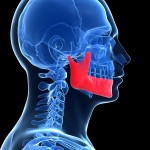
Fracture of the mandible is one of the commonest facial fractures. It has been reported that the presence of lower third molars (erupted or unerupted) increases the risk of mandibular angle fracture.
The aim of this review was to assess whether there was an association between the presence of a lower third molar and the occurrence of a mandibular angle fracture in adults.
Methods
Searches were conducted in the Medline, Scopus, SciELO, LILACS, Google Scholar and OpenGrey databases with no date or language restrictions. Initial screening was carried out independently by two reviewers with a single reviewer abstracting data for cross-checking by a second. Risk of bias was assessed using a 9 criteria tool and percentage correct scoring system.
The primary outcome was the relationship between the presence of a lower third molar and mandibular angle fractures. Vertical and horizontal positions of the lower third molar, according to the Pell and Gregory classification was a secondary outcome. Summary odds ratios (ORs) and 95% confidence intervals (95%CI) were calculated and meta-analysis performed.
Results
- 16 studies conducted between 1995 and 2015were included.
- All studies had used panoramic radiographs to assess fractures.
- All the studies were considered to be at low risk of bias.
- 15 studies indicated that patients with lower third molar were more likely to experience mandibular angle fractures.
- The odds for mandibular angle fracture in presence of lower third molar = 3.16 (95%CI; 2.2- 4.54)
Conclusions
The authors concluded: –
the presence of impacted third molars increases by 3.16 times the risk of mandibular angle fractures in adults, with the greatest risk present when third molars are classified as IIIC according to Pell and Gregory. The available evidence is not sufficiently robust to determine whether third molar presence or the level of impaction is the main causative factor for the occurrence of mandibular angle fractures.
Comments
A broad unrestricted database search was undertaken for this review with retrospective cohort studies being included. While a risk of bias assessment was undertaken using a scoring system that the authors acknowledge was subjective. Using the more methodologically sound Newcastle-Ottawa or Downs-Black tools or the newer ROBINS-I (Risk Of Bias In Non-randomised Studies – of Interventions) tool would be helpful for readers.
A similar review by Armond et al (Dental Elf 26th July – 2017) used broader inclusion criteria including 28 studies also showing higher odds of mandibular angle fracture in the presence of lower third molars. The odds ratio they found of 3.83 (95%CI; 3.02 – 4.85). was similar to the present study.
Links
Primary Paper
Ruela WS, de Almeida VL, Lima-Rivera LM, Santos PL, Porporatti AL, de Freitas PHL, Paranhos LR. Does an Association Exist Between the Presence of Lower Third Molar and Mandibular Angle Fractures?: A Meta-Analysis. J Oral Maxillofac Surg.2018 Jan;76(1):34-45. doi: 10.1016/j.joms.2017.06.008. Epub 2017 Jun 13. Review. PubMed PMID: 28688821.
Other references
Original review protocol on PROSPERO
Dental Elf – 26th July 2017

[…] post Mandibular angle fractures – Do third molars have an influence? appeared first on National Elf […]